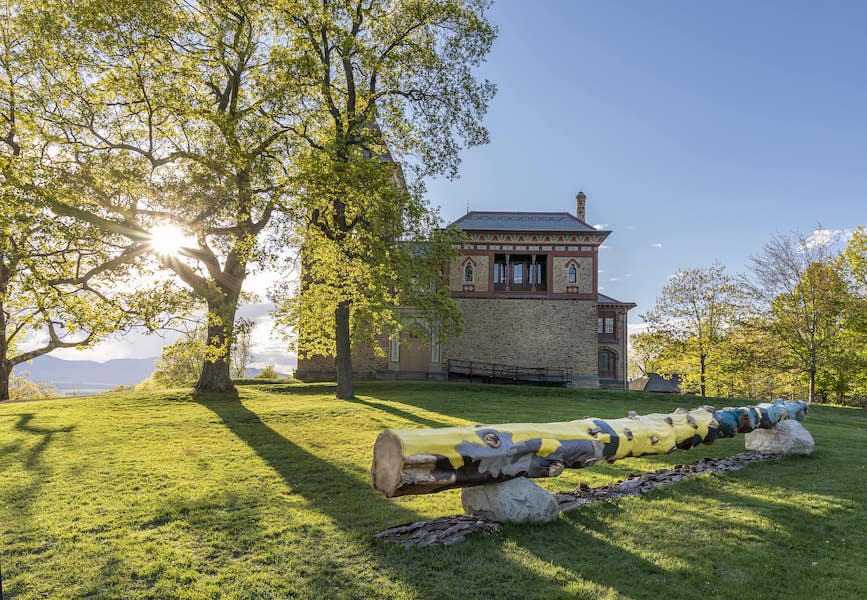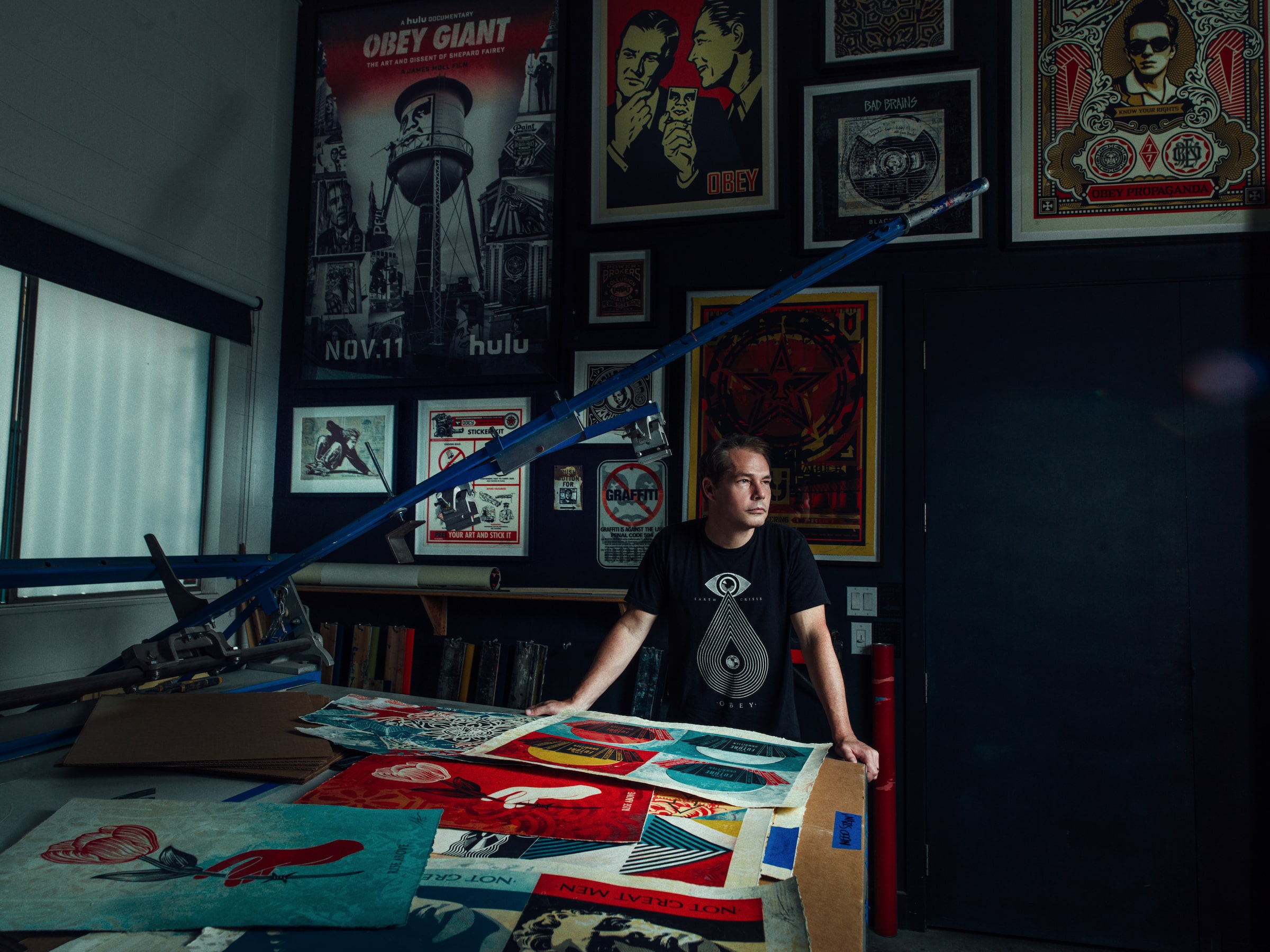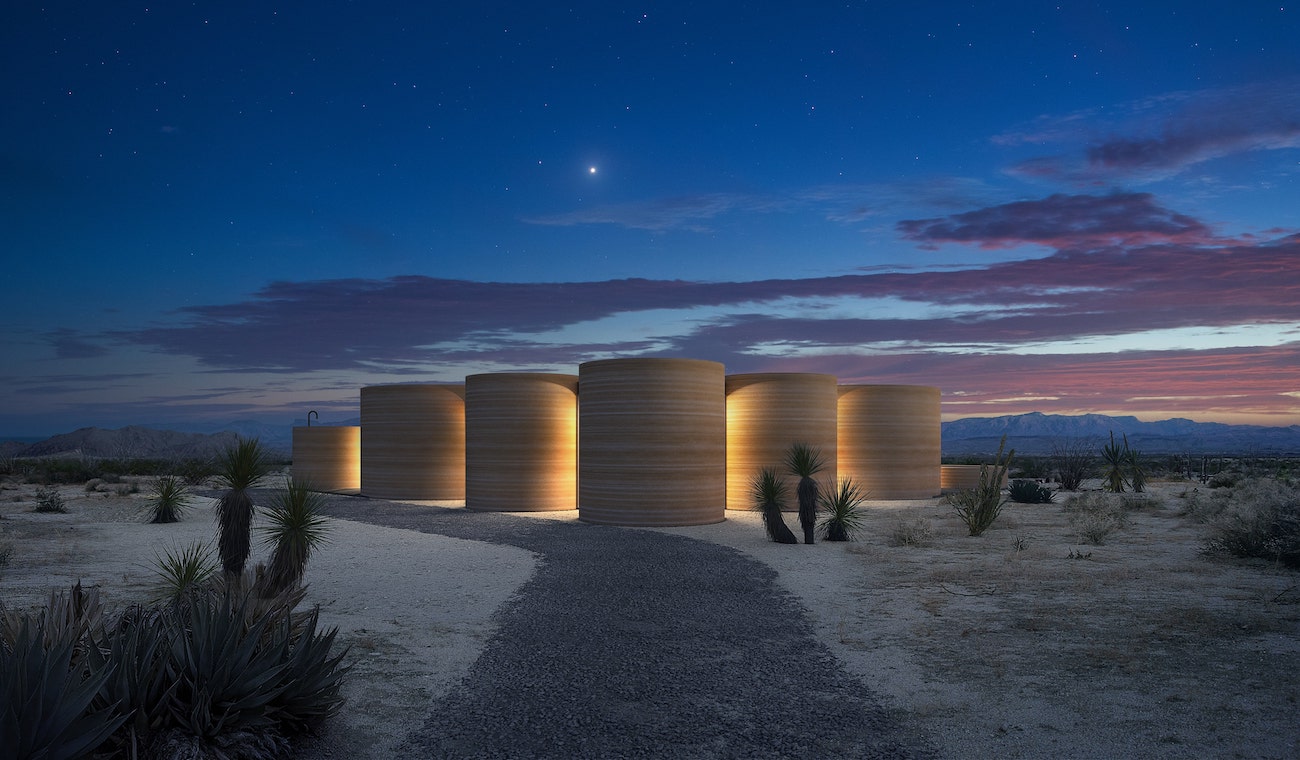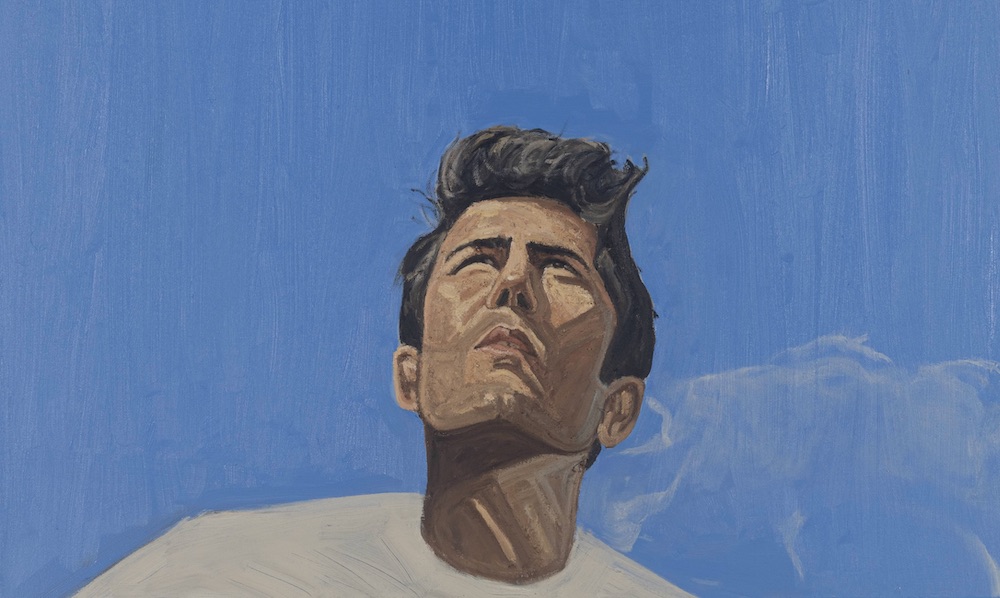Jean Shin Employs Art as a Warning Signal
On Earth Day this year, Jean Shin’s Sea Change sculpture made of more than seven thousand single-use plastic water bottles in the shape of a large wave was unveiled in Diani, Kenya. The installation was created in partnership with the Health and Environmental Research Institute – Kenya (HERI-KENYA), along with the Diani Municipality, Stanford University, and the Technical University of Mombasa. The project was part of the artist’s residency at Stanford University, where as the Denning Visiting Artist, she has collaborated with Dr. Desiree LaBeaud and her lab to address plastic waste—in both medical environments and communities like in Kenya.
The ongoing study and conversation is typical of Shin’s artistic practice, in which she often places herself in conversations with scientists. She’s interested in the fruitful ideas that come from cross-pollination across disciplines. Works like Fallen (2021), a dead hemlock tree dressed in scraps of colorful leather that reference the tanning industry’s devastating impact on the environment, ask tough questions about our own desire for more consumption, and at what cost?
And that audit of waste and impact extends within Shin’s own studio, looking inward, an example of which is on view at the Thomas Cole National Historic Site in the Hudson Valley in “Women Reframe American Landscape” this summer. There she’ll take on the wood crates artists create for the sole purpose of shipping their artworks, transforming the single-use structure into an outdoor installation. Her exhibition, “Second Skin” is currently on view at Praise Shadows in Brookline, MA through July 23.
Whitewall spoke with Shin between her work at Stanford and visit to Kenya to learn more about her process, the questions she’s currently asking, and how small increments of change can have a huge impact.
WHITEWALL: You’re currently the Denning Visiting Artist at Stanford, working in collaboration with LaBeaud Lab. Can you tell us about what you’ve been up to there?
JEAN SHIN: It’s a continuation of how artists can be in collaboration with scientists there. At Stanford, there was funding for a visiting artist to engage with the medical institutions there. This researcher, Dr. Desiree LaBeaud, who has been deep into infectious disease, was interested in artists working with plastic waste, in particular. She has a nonprofit in Kenya—Health and Environmental Research Institute (HERI)—where before they can do any proactive medical intervention, they need to change the environment in which the communities live so that mosquitos aren’t bred there in the first place.
Awareness has been her biggest challenge there, and how to mobilize people to clean up the waste, of course, not only being generated by the local community but literally being washed ashore by the ocean from our waste in the Western world.
So there’s this connection between working with her and looking at medical waste in plastics. There is such a paradox between all the efforts they could be doing while they are doing their big mission work. What’s the process? What’s the impact now? It’s disposable, single-use plastics, and much of it can be recycled.
LaBeaud Lab has done a deep dive audit of their own lab, and everyone is so conscientious of everything little thing they could possibly recycle. We’ve mobilized not just the medical students and her lab but started a conversation across many schools—the art department and designers.
“We need the person who is seeing things beyond the practical”—Jean Shin
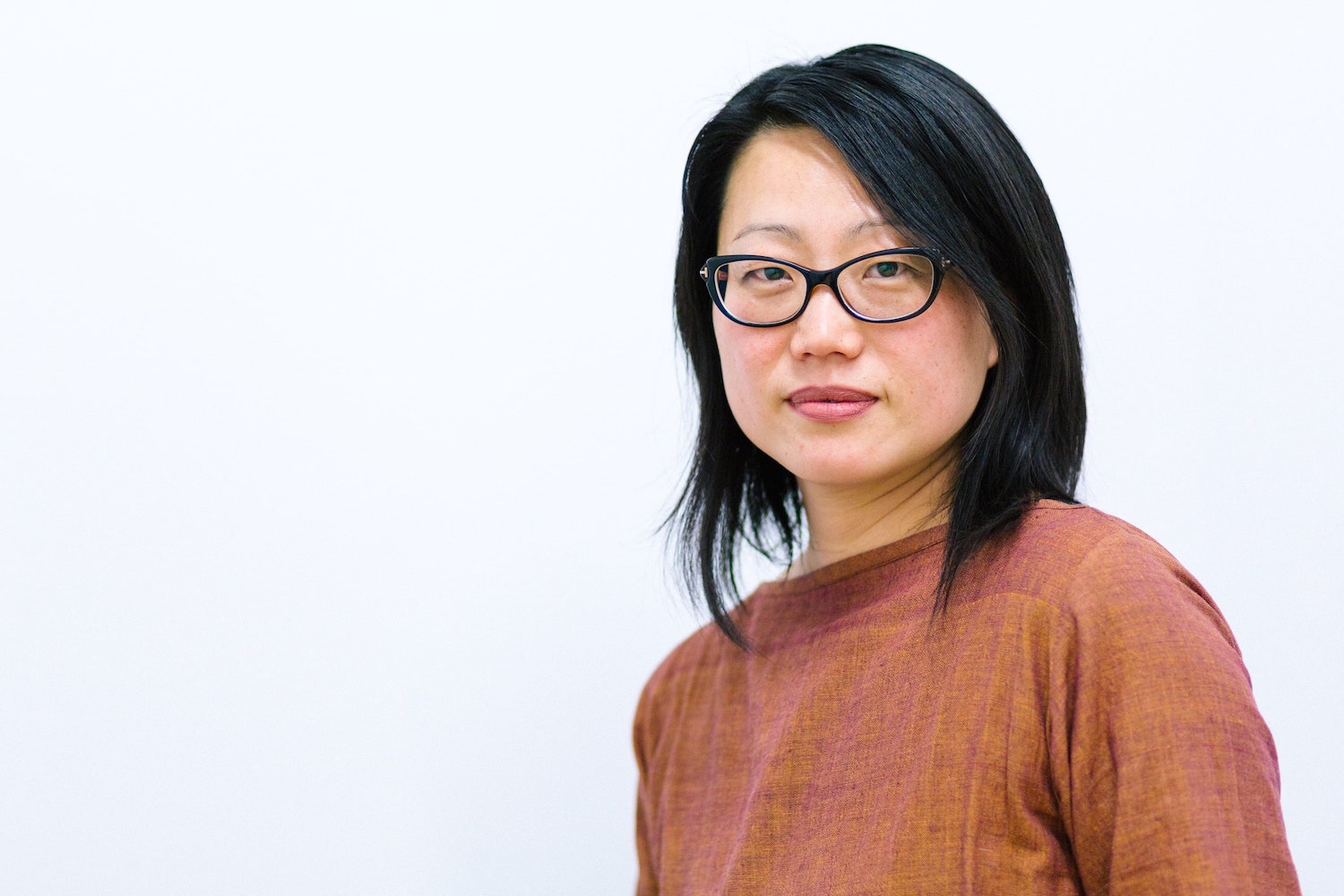
Portrait of Jean Shin by Daniel Terna.
WW: So much of your practice involves engagement with an expert in their field like a scientist. As an artist, how do you like to approach that conversation?
JS: It’s a self-selected group—meaning they are interested in art; I’m interested in science. The notion of planetary health is what brings us together. The notion we want our practices to have this kind of impact and change, and is it possible? Is it possible to do something different when we cross-pollinate in this way? It’s a matter of having those rich conversations. Is there a solution outside their own field? I often think about making sculptures with materials that have an association, and what would those associations be? And how could I have this conversation expand to a different audience?
We need the empathy, we need the person who is seeing things beyond the practical. I do think that is the most effective way, not to be talked down to. I would love to be a zero-waste practitioner, but how do I do that? I realize that it’s an impossible ask, but we have to ask those deep questions, “What can I do still?” It’s a careful audit of little tiny increments of change that actually if everyone did it would have huge impact.
WW: This summer, your exhibition “Second Skin” opens at Praise Shadows in Brookline, Massachusetts. Some works on view are related to your 2021 commission Fallen at Olana, the Frederic Church Estate. There you enshrouded a 140-year-old eastern hemlock tree that had died in richly colored discarded pieces of leather—the leather addressing the impact the tanning industry had on the local environment. Can you tell us about what will be on view?
JS: It’s going to be other parts of the Fallen tree, so the limbs in the “SOS” series and also the shroud, the actual leather piece that held the body of the tree. I saved it and during the MacDowell residency spent time cleaning it and reconditioning it. I’m transforming them into tapestries. I love when you hold on to something and its purpose reveals itself later. It takes time, but it also takes space and the intention.
The “SOS” pieces were the branches of the fallen tree. Frederic Church planted it witnessing the deforestation and the devastation that was happening with the tanning industry in the Catskills. His house overlooked the mountains where all the tanneries were in the 1800s that were destroying hemlock forests. He planted this tree and it lived 140 years, and on our watch it died. It died of old age, but hemlocks are going through another layer of devastation because of invasive species.
When we were working on the larger commission, I wanted it to feel like it was this mourning period, a funeral. They have so many limbs—that’s what hemlocks are so known for—so if I’m preserving the body, I thought maybe the arms could be circulating, sending this message about what’s happening with the body, and what’s happening with trees all over. They are the warning signal to us, to the art world, to the public at large. It’s an old-fashioned way of calling for help.
WW: That series is so beautiful, at first in its texture and color and material— the tree branch, the vibrant soft leather, the brass rivets. It draws you in and then comes the story behind it, that call for help, as you describe it. And that makes us start to reevaluate your relationship to consumption, and at what cost to nature. Which makes me think of something you’ve talked about before, our assumption that nature is just in the background.
JS: The notion of nature being in the background, landscape as this beautiful backdrop—in our culture that has been so painfully devastating because we are nature. We are part of that “landscape.” That separation of it being this backdrop and “other” is the biggest hurdle mentally. If we understood that we are part of nature, we wouldn’t treat ourselves this way. Everything we do is going to have some impact. And now nature is having an impact on us. This othering of this system is coming to have effects on our life. We can’t drink our water suddenly, and we can’t breathe our air.
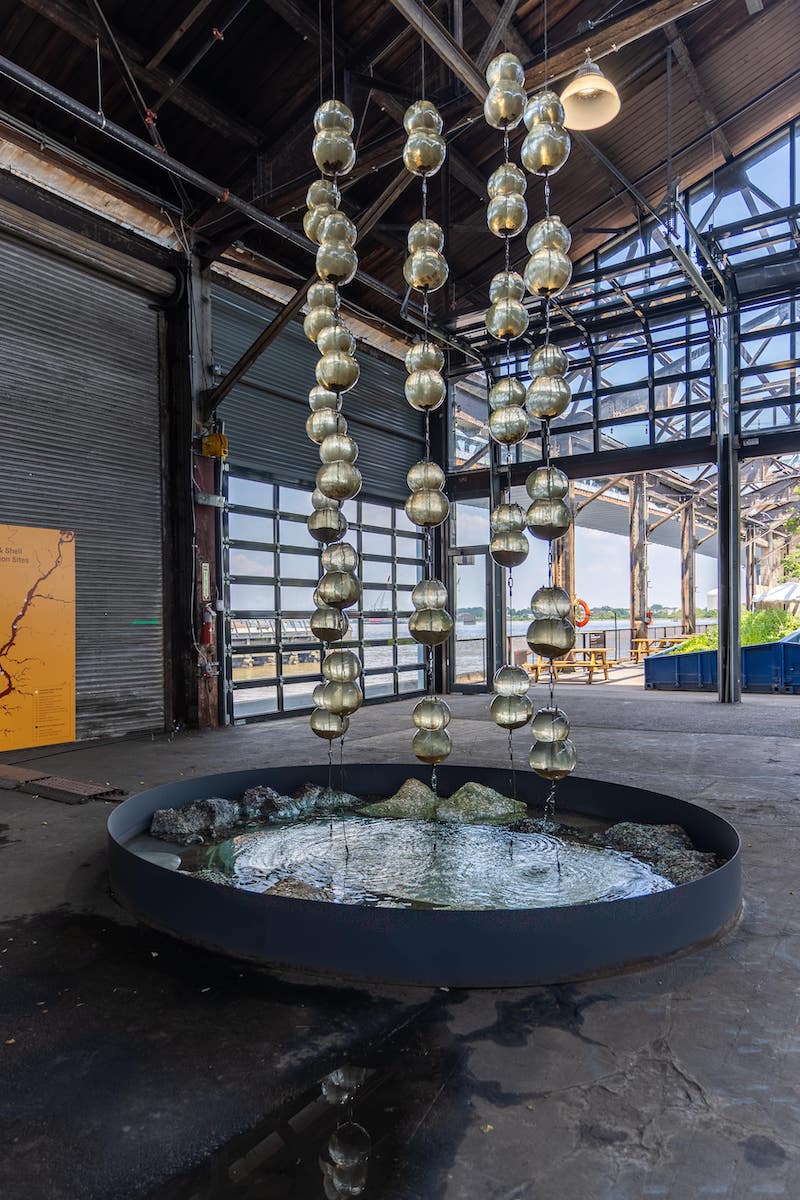
Jean Shin, “Freshwater,” 2022, Installation at Cherry Street Pier, Philadelphia, PA; commissioned by Philadelphia Contemporary, photo by David Evan McDowell, courtesy of the artist. 2022, Installation at Cherry Street Pier, Philadelphia, PA; commissioned by Philadelphia Contemporary, photo by David Evan McDowell, courtesy of the artist.
WW: That makes me think of your installation Freshwater with Philadelphia Contemporary in 2022. You created a fountain, sourcing water from the Delaware River, of blown glass pods—some with live freshwater mussels, some without. It spoke to the mussels as natural filtration systems for our rivers, and their population’s devastation due to pollution and overharvesting. What was it like to create a living sculpture that would change over a longer course of time? Where there was a question of, what will happen?
JS: It was a living laboratory! It was unusual for my project to be working with living organisms that I was a steward of. And I didn’t want them to die or be stressed out on my watch. I worked with the scientists, and we monitored them and made sure that they were healthy.
I was hoping they could perform for us, that we would see clear water, because that’s what the scientists see in their closed system. But I was creating an open system. The water from the river was flowing in with them. Nature was literally coming in to the work. And therefore, at very early in the stage of the summer, algae growth took over the glass vessels. So we watched and learned. We said, “Don’t do any quick action, let’s just see what happens.”
I learned to try to not control it, to go with it. Nature has its own ways of inhabiting this piece. It’s going to be a green, glowy, algae-filled place. The mussels were still thriving; they lived through it. There was a difference between the vessels with the mussels and without, and that was so beautiful. It was so beautiful, and the lesson learned was nature’s going to take over.
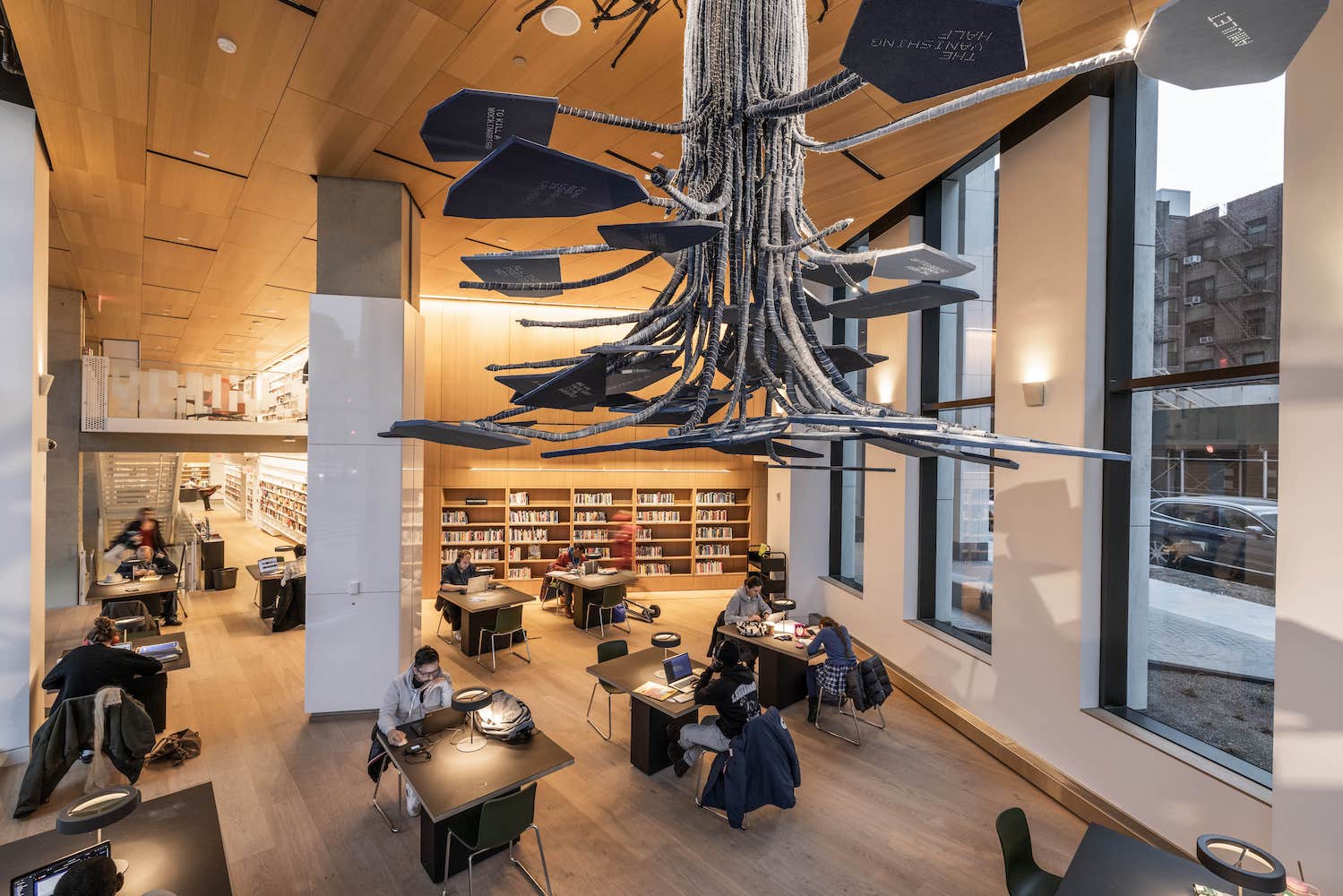
Jean Shin, “Something Borrowed, Something Blue,” 2023, Installation at Brooklyn Heights Library, Brooklyn NY; photo by Gregg Richard, courtesy of the artist.



